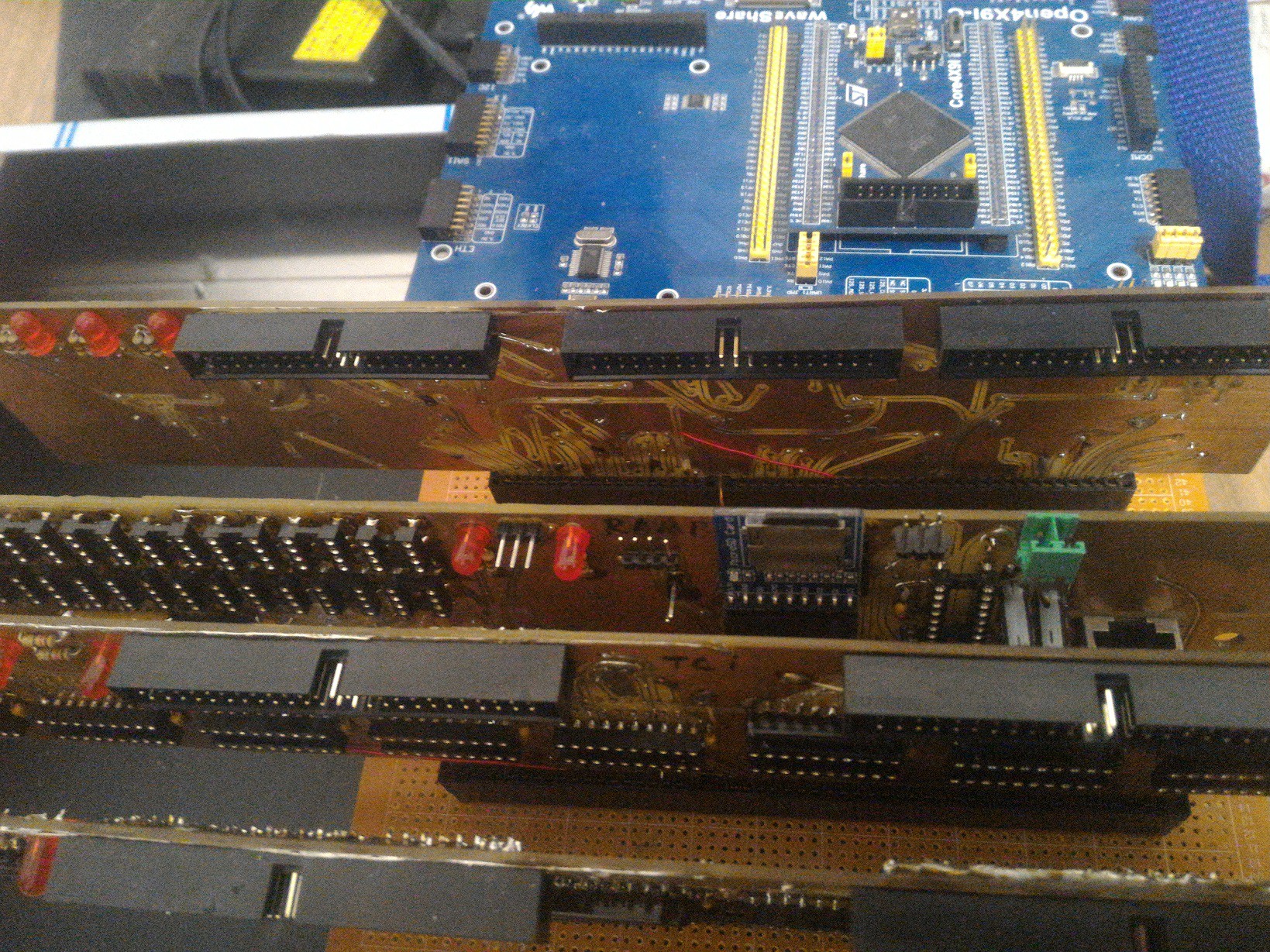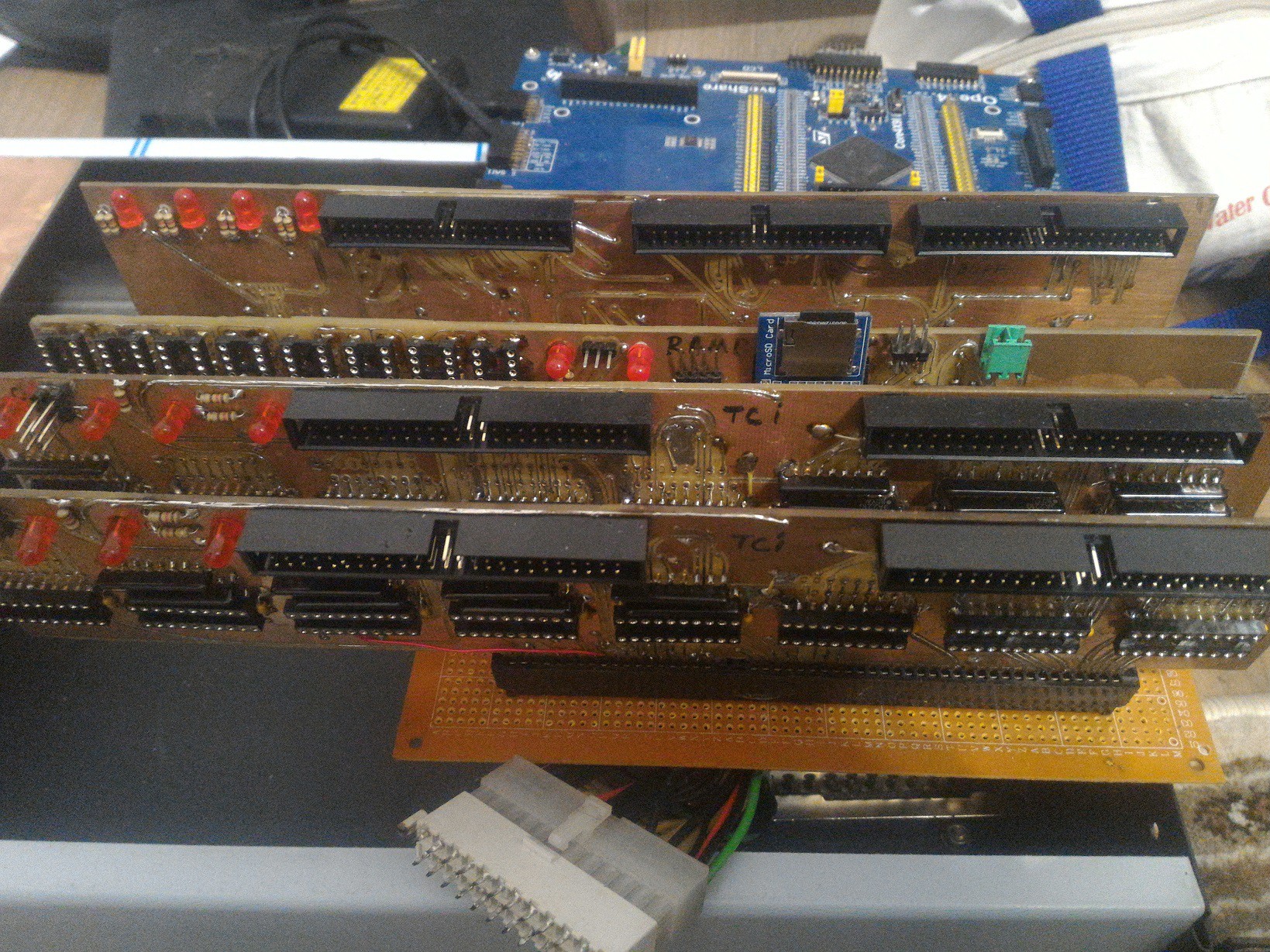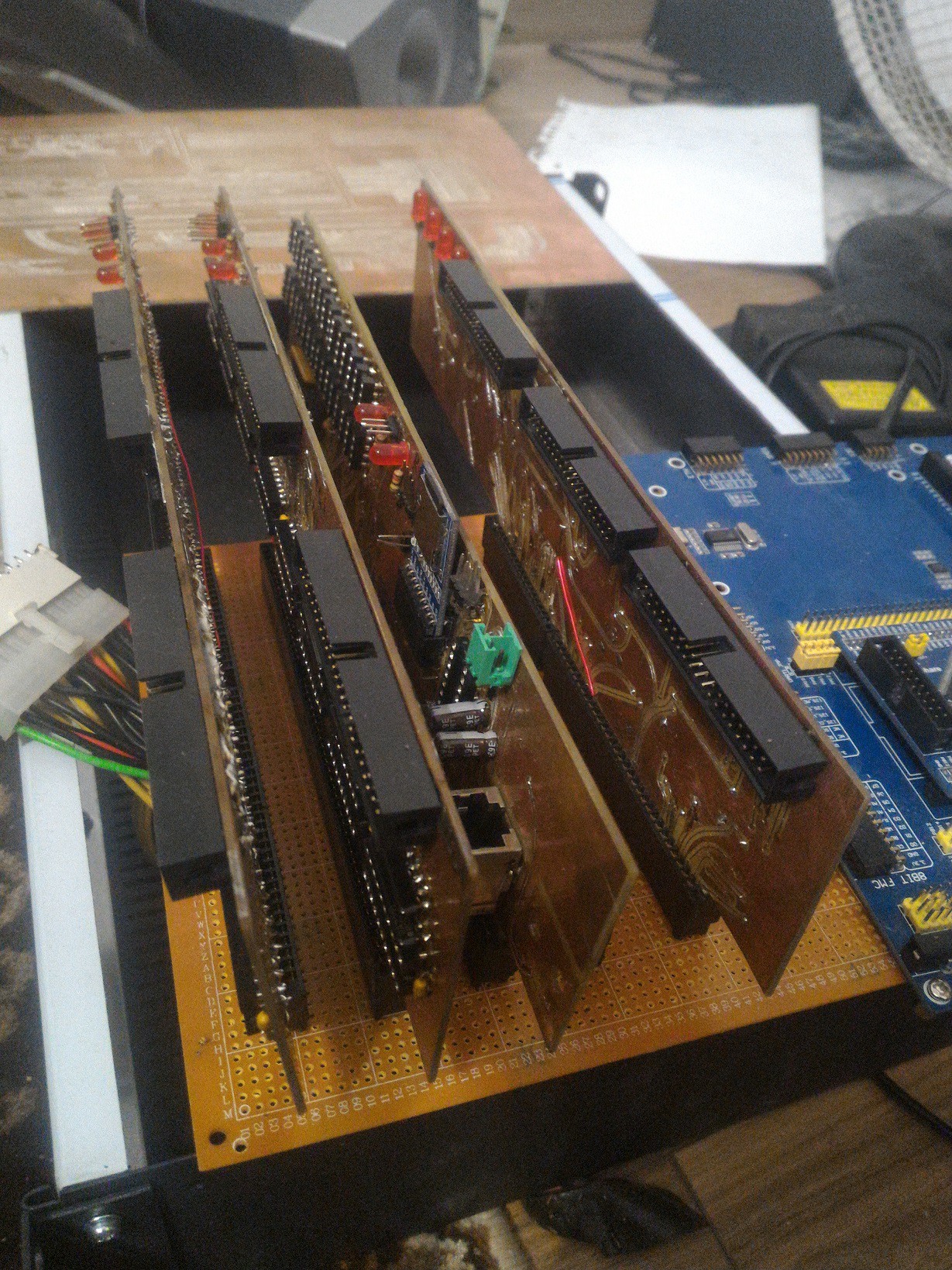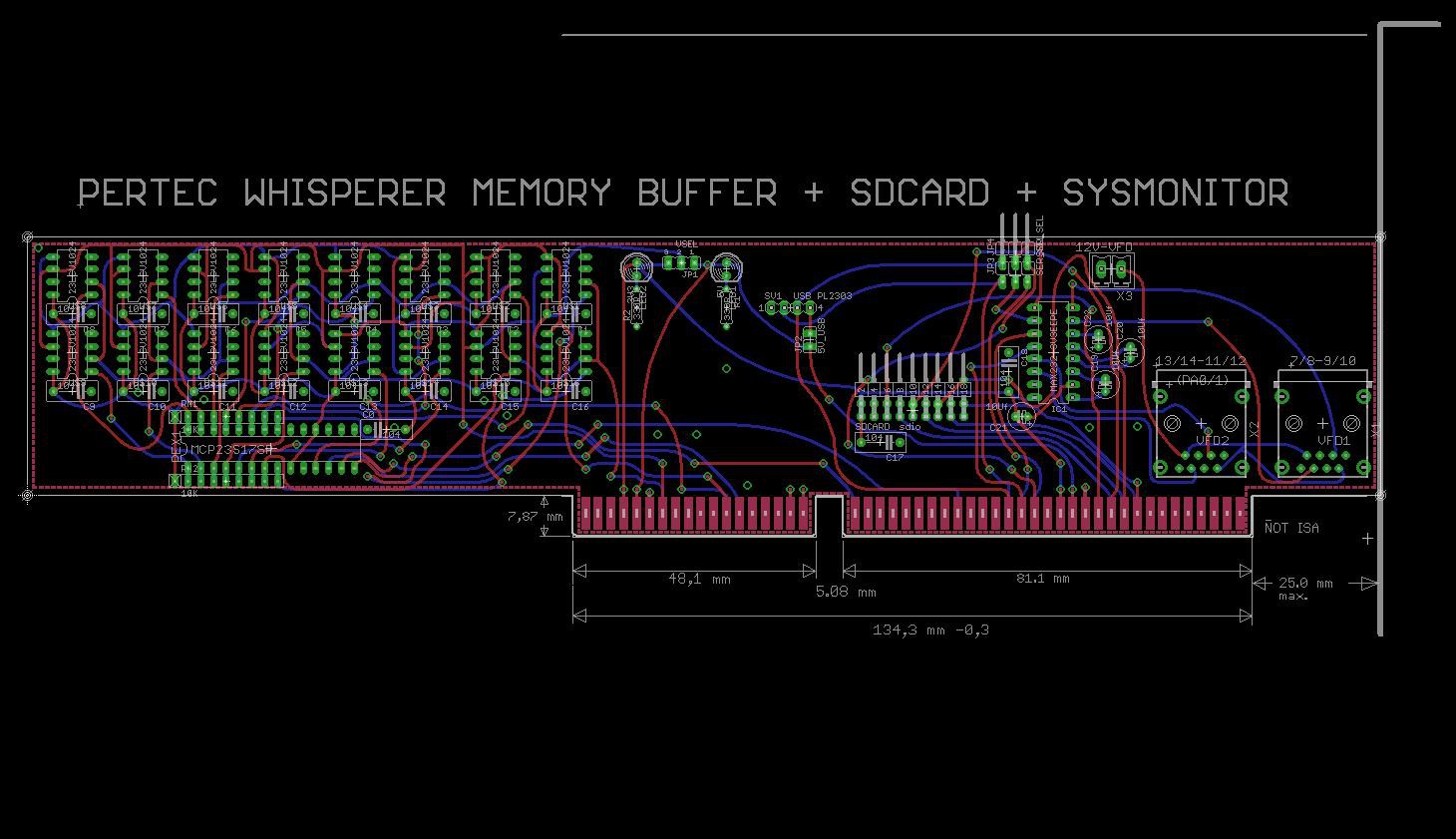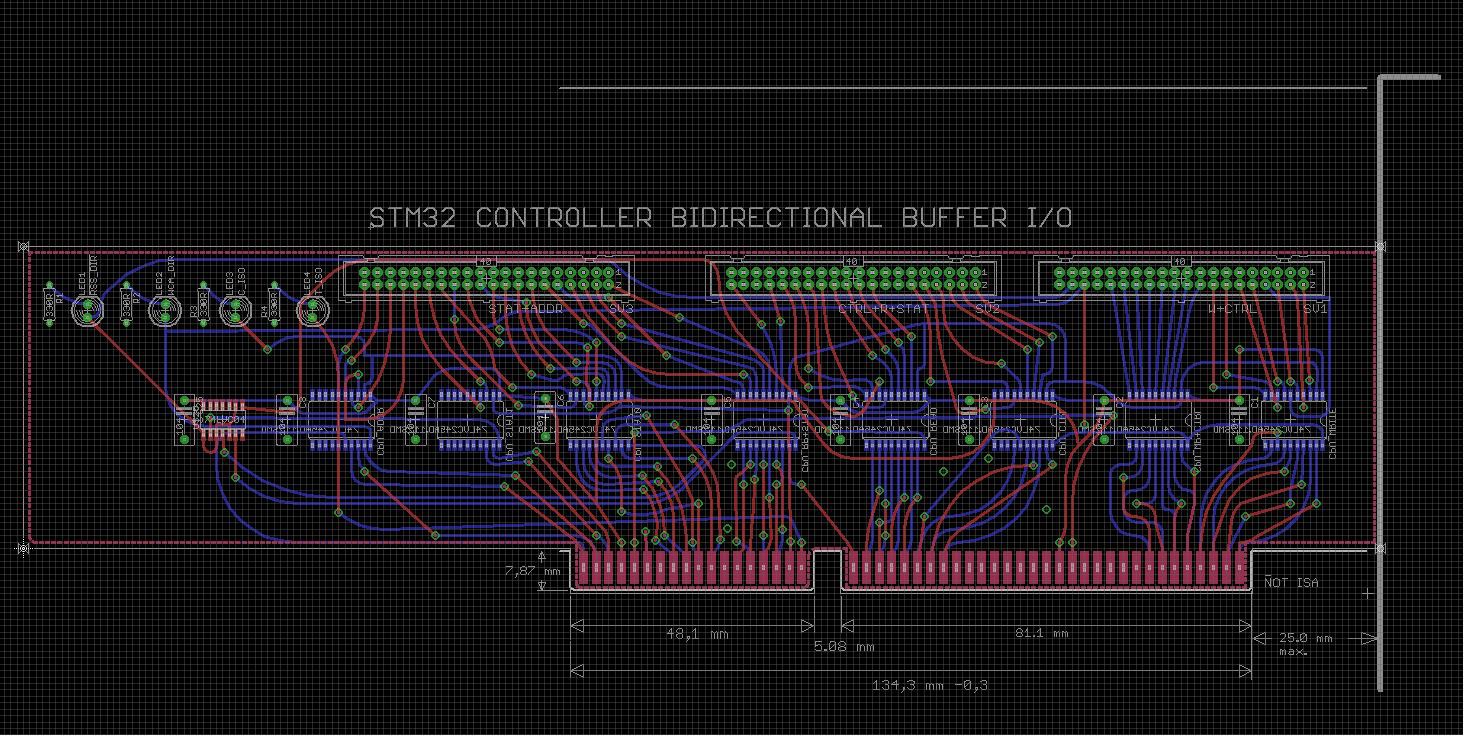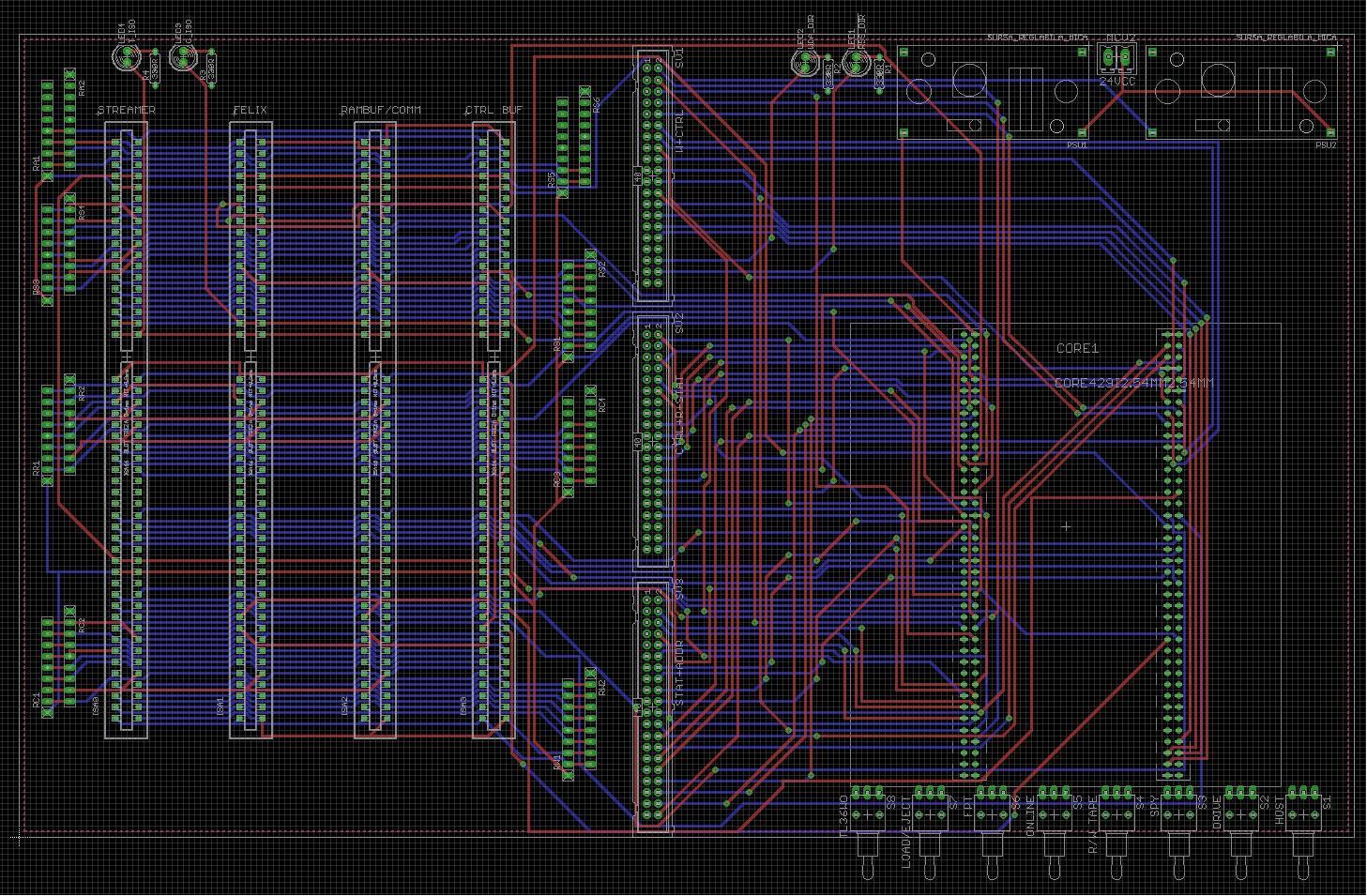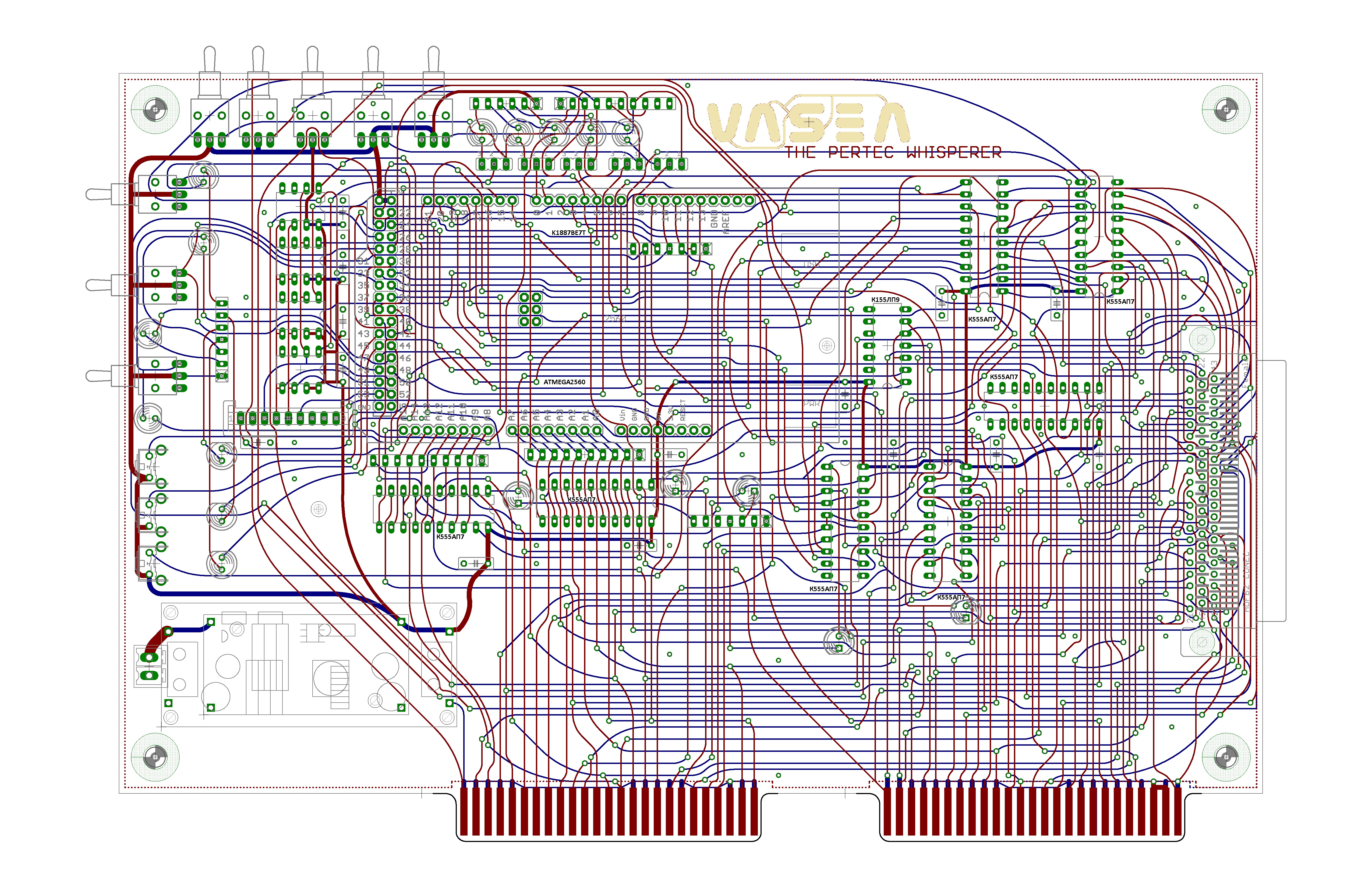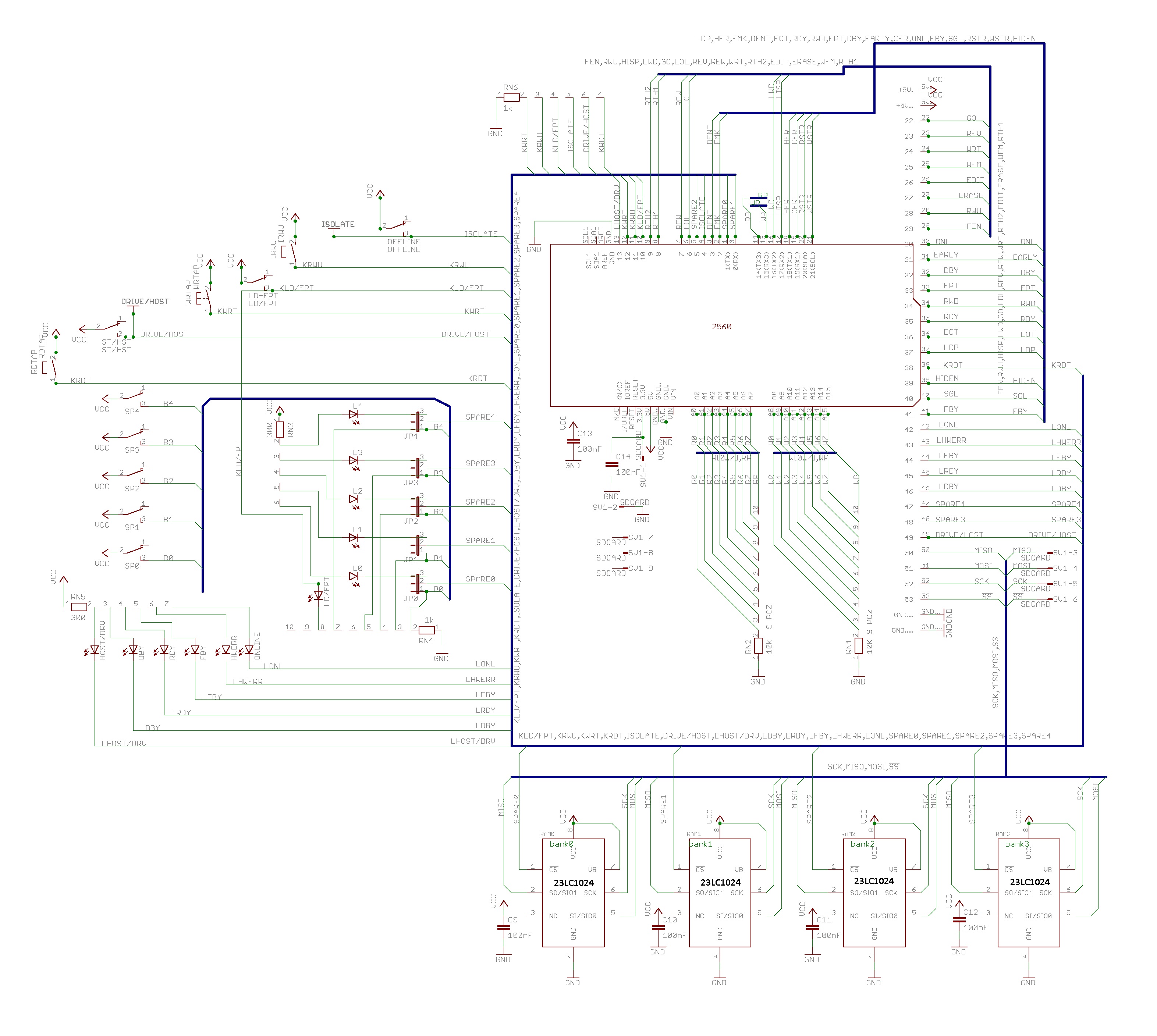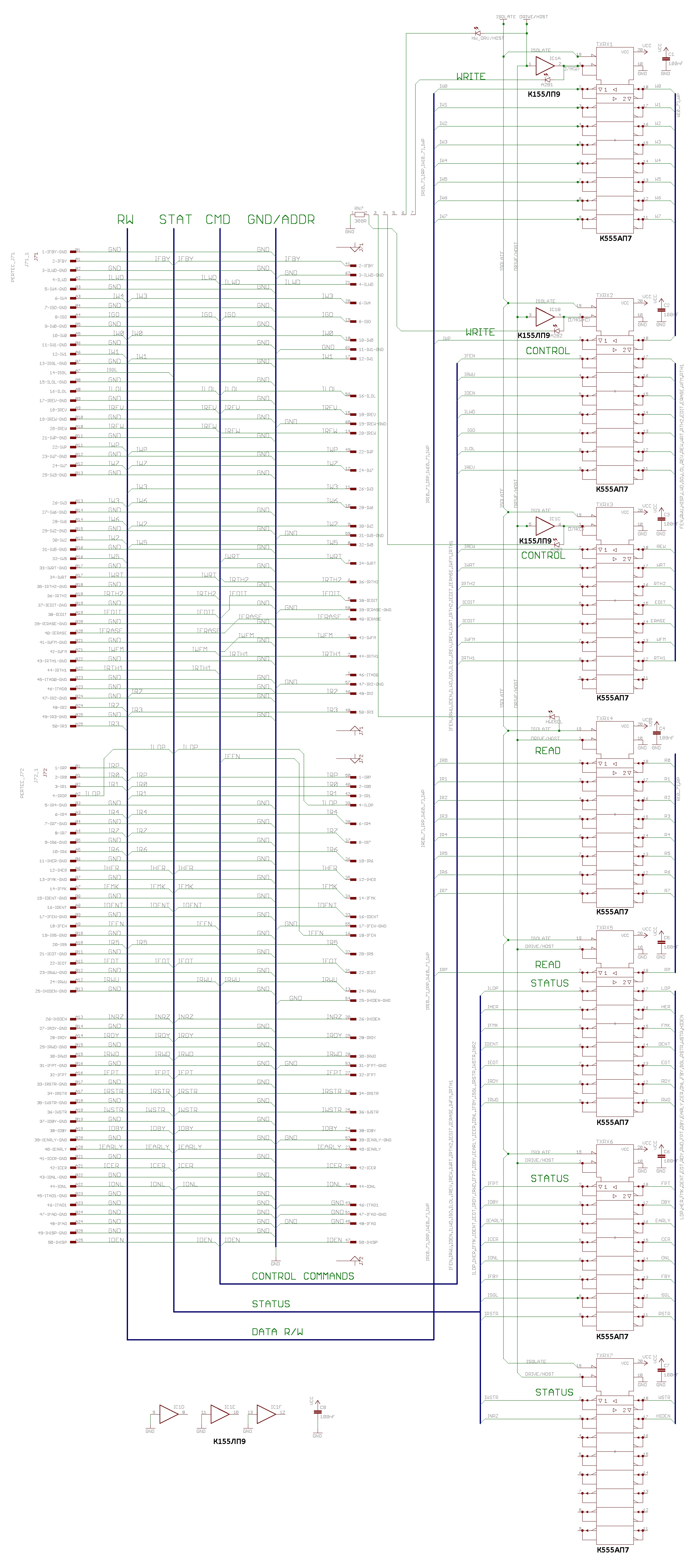-
The Main Board (I)
02/12/2019 at 17:05 • 0 commentsUpdate: motherboard manufacturing is now in progress
![]()
And the peripherals previously shown as board design schematics:
![]()
![]()
![]()
A lot of work is still in progress.
-
Second prototype - almost ready
01/06/2019 at 21:41 • 0 commentsBig news. First prototype was a disaster. This one may be too. Only the motherboard PDF schematic is included and that is still incomplete, as I did not implement (yet) the logic for talking to the peripherals.
So this is how the system work:
- one interface to talk to the drive - to make it believe it's talking to the mainframe;
- one interface to talk to the mainframe - to make it believe it's actually talking to the tape drive;
- one bidirectional buffer interface to separate the microcontroller from the previous two (you will see why later);
- one SRAM memory buffer interface. The board also contains one microSD card and some serial communication stuff (max232, usb serial) for some LCD and some PC terminal monitor/debug.
Later additions - this is why I made it modular:
- one SCSI peripheral interface;
- one ESDI / MFM peripheral interface;
- other stuff, depends how many spare pins I have left.
The microcontroller belongs to STM32F4 family.
Here's the trick: the system can be set on "bypass" allowing the drive to talk to the mainframe while the STM32 listens and logs the protocol - which is a real sadomasochistic pain to implement and understand;
Tape can be read and dumped to SDCARD. Also a new tape can be written from the SDCARD.
Mainframe can talk to the SDcard while the tape stays offline;
sdcard becomes an USB peripheral so the files can be inspected, or a SCSI peripheral, or an ESDI/MFM storage device for old equipment;
The 9 track tape drive can also become an USB peripheral - a big, nasty, noisy useless USB storage device. Or a SCSI peripheral.
See attached pictures and the PDF schematic here.
As always - WARNING: do not try to reproduce, this is an incomplete work in progress and there may be mistakes.
-
VHS - 9 Track Tape Density Experiments (1)
05/09/2018 at 08:44 • 0 commentsInteresting things first: some of the parts arrived. I am still waiting for the boards. I will upload pictures as soon as I have all the ingredients together.
Some years ago in one cold winter morning I woke up with a strange idea: measure the width of the tape inside a VHS Cassette. As I found out it was 12.7 mm, exactly as 9-track tape. Some e-mails followed and finally I got around 5 kilometers of VHS tape in refill pancakes from some factory in Netherlands which no longer exists today.Tape refill was performed in a Fallout-4-style environment:
In the next "VHS - 9 Track Tape Density Experiments (2)" log I will show the detailed test results with pictures and screenshots. I am still running the tests
In the mean time here is the short version:
VHS tape supports 6250BPI density only when block size <=16Bytes. As soon as I increase the block size, I get repeated uncorrectable hardware write errors, IHER line goes low and the drive gets unfrozen only when ILOL or IREW are fired. So my experiment is working only for 1600BPI and 3200BPI.
-
Awaiting offer from local PCB manufacturer
04/16/2018 at 20:23 • 0 commentsI have my own tip line on Eastern Europe PCB Manufacturers.
Romania - PCB Electra - https://www.pcb-electra.ro/?lang=enThey manufacture industrial PCBs - single sided, double sided and also multi layer. And they are cooler than OSH-Park or Eurocircuits because these guys can handle serious stuff - from 4 up to 24 layers!
I sent them the PCB project for review. More news when I have a reply.
-
PCB - first prototype
04/15/2018 at 11:58 • 0 commentsWork is done
![]()
Awaiting reply from some manufacturers. OSHPark has no plans yet to multiply 10x their profits by coming to Europe. I went on their web site -three of these PCBs cost me around 200$ per total which is cool - but I have no wish to pay to fullfill some Ministery of Coruption and Stealing abusive fees on work&research in customs.
Eurocircuits is the second choice. A little more expensive and PCB is coming in two weeks. I want this done fast so I can start with the software as soon as possible.
I am considering two options: some local PCB manufacturer which will make one of these in 5 days for around 100US$, or I will do it myself using my old CNC and tons of patience.
-
Central Processing Unit
04/15/2018 at 11:48 • 0 commentsThis is the classic Arduino. 8 bits architecture is required to keep things as simple as possible - just because the PERTEC communication protocol is a real pain. It is documented on bitsavers on all those PDFs gathered by the willpower of our digital forefathers. Documenting this is still work in progress, as I have to read everything from beginning to end. Some PDFs have hidden surprises which the rest do not tell. These secrets are well kept.
Added 512kB RAM for buffering the transfer.
![]()
-
Pertec I/O interface schematic
04/15/2018 at 11:44 • 0 commentsThere are two connectors: the two classics - P1 and P2 - and the DB62F. Whatever is connected there is the user wish: either the tape drive or the pertec controller. To keep things simple, these two are not supposed to be online at the same time. If acting as a host, only the drive itself should be tunrned on. If acting as a drive, the tape drive should be switched off. You got the idea.
![]()
THE PERTEC WHISPERER-MAINFRAME TAPE DRIVE EMULATOR
A.K.A. THE 9 TRACK TAPE DRIVE COMMUNICATOR Talking to Mainframes Era Reel to Reel 9 track tape drives
 [skaarj]
[skaarj]
